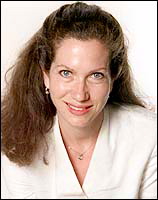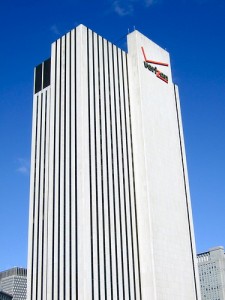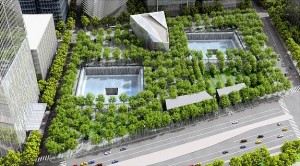There’s more, much more, at stake here than a memorial…The [9/11] attack made everyone afraid of appearing unpatriotic, of questioning government, leaders. Fear has justified war, torture, secrecy, all kinds of violations of rights and liberties. Don’t let it justify taking the memorial away from [Mohammed] Khan…Don’t mistake the absolutism of Khan’s opponents for morality.”
A novel which has received rave advance reviews for Amy Waldman, a New York Times reporter and bureau chief turned novelist, The Submission posits a series of “what ifs” and then lets the turmoil unfold. In the aftermath of 9/11, with hundreds of families trying to cope with the magnitude of  their loss and the entire country trying to cope with their loss of innocence, a competition is held to design the memorial which will be constructed at Ground Zero. Representatives to the selection committee are chosen from all levels of society, including a woman who has lost her husband in the attack, and their task is to choose the best design from all of the “blind” submissions, designs lacking all personal references, including the names of the architects, to avoid favoritism. In the final tumultuous voting between two completely different designs, Claire Burwell, the woman widowed by the attack, favors the design of The Garden, a place of peace and contemplation, with the names of the victims on the walls around the garden. Other committee members are swayed by Ariana, a famed sculptor, who favors a stark, monumental creation called “The Void,” which Claire finds cold.
their loss and the entire country trying to cope with their loss of innocence, a competition is held to design the memorial which will be constructed at Ground Zero. Representatives to the selection committee are chosen from all levels of society, including a woman who has lost her husband in the attack, and their task is to choose the best design from all of the “blind” submissions, designs lacking all personal references, including the names of the architects, to avoid favoritism. In the final tumultuous voting between two completely different designs, Claire Burwell, the woman widowed by the attack, favors the design of The Garden, a place of peace and contemplation, with the names of the victims on the walls around the garden. Other committee members are swayed by Ariana, a famed sculptor, who favors a stark, monumental creation called “The Void,” which Claire finds cold.
The debate rages as the two women try to persuade their fellow committee members, and ultimately, the more emotionally sensitive design of The Garden, as advocated by Claire, prevails. When the envelope naming the architect is opened, they discover that they have chosen Mohammad Khan, an American, to design their memorial.

It is as this point that the novel really begins. Questions arise as to whether or not to release the architect’s name; whether his win can be “finessed” on the grounds that he could be considered “unsuitable,” a loophole included in the terms of the selection; whether this is an insult which will inflame the already devastated families; whether the architect’s religion should even be an issue; and how this will affect the Muslim population of the country, which is already dealing with negative aftereffects of the attack. Lines are drawn when a newspaper reporter reveals the results, with the predictable outcry and development of community groups to lobby for and against the choice, heavily weighted against Khan.
Though the arguments are developed thoroughly along philosophical and moral lines, and are not simply hot-headed reactions, the resulting tumult will strike a chord with readers–the passionate, real-life arguments for and against the proposed building of a mosque near Ground Zero in recent years make these arguments sound quite familiar. What makes this novel different, and often quite moving, is that it personalizes these arguments as we are drawn into the everyday lives of those who have been forever changed by the attack, as they make their points of view understandable, even when they are patently “un-American.” At the same time, we are coming to know Mohammad Khan, born in Virginia and not religious at all, a man who does not really understand why he should be asked and expected to answer questions about his religion and his intent regarding the Garden. The Big Question: Is this to be a construction of Islamic Paradise? And he wonders whether the same questions would ever be raised if the architect had been a member of any other religion?
 The novel moves quickly, as Waldman sets up her conflicts, which are often aggravated by the ever-present press corps, and those who feel that journalists sometimes go too far in their pursuit of a story will find ample evidence here that the author agrees with this accusation. Petty politics is equally repulsive, and the tendency of politicians to keep their eye on the next election, rather than what is right, rears its ugly head throughout. So, too, does the violence committed by hot-heads who have no insight into real issues, just those they think show them to be victimized. When headscarf-pulling incidents graduate to much worse, and local mosques have to hire additional security, the scene is set for a showdown.
The novel moves quickly, as Waldman sets up her conflicts, which are often aggravated by the ever-present press corps, and those who feel that journalists sometimes go too far in their pursuit of a story will find ample evidence here that the author agrees with this accusation. Petty politics is equally repulsive, and the tendency of politicians to keep their eye on the next election, rather than what is right, rears its ugly head throughout. So, too, does the violence committed by hot-heads who have no insight into real issues, just those they think show them to be victimized. When headscarf-pulling incidents graduate to much worse, and local mosques have to hire additional security, the scene is set for a showdown.
Though the novel does not break new ground in casting light on the issues involving Muslim participation in the American dream, it does shine the spotlight on them, and it does provide characters with whom the reader may identify. These characters are not fully developed, as a rule, but Claire, with her personal conflicts, and Mohammed with his refusal to recognize the more universal philosophical conflicts he is facing do provide entrée into some of the more complex conundrums of this issue. The governor states, “The danger to America isn’t just from jihadists…It’s from the naïve impulse to privilege tolerance over all other values, including national security. Mohammad Khan has brought us face-to-face with our own vulnerability.” A survivor states, “We, who have carried the weight of proving America’s tolerance…well, it’s a lot to ask. Back when the Carmelite nuns wanted to put a convent at Auschwitz, the pope decided to respect the sensitivities of the Jews and move it. He wasn’t saying the nuns had no right to be there; he wasn’t saying: rights do not make right, but feelings matter, too.” And as Claire declares: “Sometimes I feel like I’ve got one leg in New York and one in America.”

As the story plays out, the author provides an insight into the future, describing the lives of the people in the novel a few years hence. Ultimately, Claire says it all: “So many more Americans ended up dying in the wars the attack prompted than in the attack itself that by the time they finished this memorial it seemed wrong to have expended so much effort and money. But it’s almost like we fight over what we can’t settle in real life through these symbols. They’re our nation’s afterlife.”
Photos, in order: The author’s photo from the New York Times is from http://tv.nytimes.com
Mohammad Khan believes that the Verizon Building on Pearl St. in New York is a “living rebuke to nostalgia, these Goliaths that had crushed small businesses, vibrant streetscapes, generational continuities, and other romantic notions beneath their giant feet.” It is in opposition to architecture like this that he has created The Garden as his memorial. http://ny-pictures.com
The actual design of the (real) memorial at Ground Zero is shown here: http://www.flagsbay.com/
A 3D view of the real 9/11 memorial may be seen in this YouTube video:
